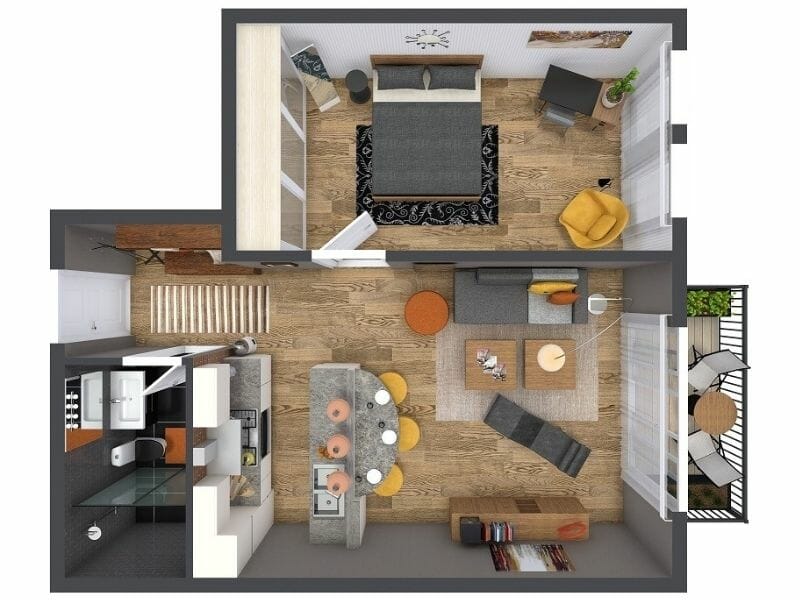Hallo, you! Welcome to your journey towards creating a cozy sanctuary in your own home. Whether you’re starting from scratch or simply looking to refresh your current space, the goal is the same: to create an environment that feels warm, welcoming, and truly yours. In today’s fast-paced world, having a cozy home to retreat to is more important than ever. It’s a place where you can unwind, relax, and recharge after a long day. In this article, we’ll explore various design elements that can help you transform your living space into the ultimate cozy sanctuary. From choosing the right color palette to incorporating soft textures, lighting, and personal touches, we’ll cover everything you need to know to make your home a haven of comfort and style. Let’s get started!
Choosing the Right Color Palette
One of the most important aspects of creating a cozy home is choosing the right color palette. Colors have a powerful impact on how we feel in a space, and selecting the right shades can set the tone for your entire home. When aiming for coziness, consider warm, earthy tones like beige, taupe, and soft browns. These colors create a comforting, grounded atmosphere that instantly makes a space feel more inviting. If you prefer a bit more color, soft hues like dusty pinks, muted greens, and warm yellows can also add warmth without being overwhelming. Additionally, consider the use of accent colors to add depth and interest to your rooms. According to sources havenblueprint.com Deep blues, rich burgundies, and forest greens can be used sparingly to create focal points and add a touch of sophistication. Remember, the key to a cozy color palette is to avoid harsh, bright colors that can feel too stark or cold. Instead, opt for shades that evoke a sense of calm and comfort.
Incorporating Soft Textures
Another key element in creating a cozy home is the use of soft textures. Texture adds depth and dimension to a space, making it feel more layered and inviting. Start by incorporating plush, comfortable fabrics into your home, such as soft throw blankets, cozy cushions, and warm rugs. These items not only add comfort but also make a space feel more lived-in and relaxed. In the living room, consider adding a chunky knit throw or a faux fur blanket to your sofa, or layering different textures with pillows in various fabrics like velvet, linen, and wool. In the bedroom, a thick duvet, soft flannel sheets, and a few decorative pillows can make your bed feel like a luxurious retreat. Don’t forget about the importance of texture in your window treatments—heavy drapes or soft sheer curtains can add warmth and softness to a room. Even smaller details like textured lampshades, woven baskets, and natural wood furniture can contribute to a cozy atmosphere. The goal is to create a space that feels inviting and comfortable, where you and your guests can easily relax and unwind.
Lighting for Ambiance
Lighting is crucial when it comes to creating a cozy atmosphere in your home. The right lighting can transform a room from cold and uninviting to warm and welcoming. Start by layering your lighting with a mix of ambient, task, and accent lighting. Ambient lighting provides overall illumination for a room, while task lighting focuses on specific areas like reading nooks or workspaces. Accent lighting is used to highlight certain features in your home, such as artwork or architectural details. When it comes to creating a cozy vibe, soft, warm lighting is key. Avoid harsh, bright lights that can make a space feel sterile and uncomfortable. Instead, opt for warm, dimmable bulbs that allow you to adjust the lighting according to your mood and needs. Table lamps, floor lamps, and wall sconces are great options for adding soft, diffused light to a room. Candles are another excellent way to add warmth and ambiance to your home—place them on tables, mantels, or in the bathroom for a spa-like feel. If you have a fireplace, make it the focal point of your room by arranging seating around it and using it as a source of both light and warmth. With the right lighting, you can create a space that feels cozy and inviting, perfect for relaxing evenings at home.
Personalizing Your Space
Your home should be a reflection of who you are, and personalizing your space is an important step in creating a cozy sanctuary. Start by incorporating items that have sentimental value or that tell a story—family photos, souvenirs from your travels, or artwork that you love. These personal touches add character to your home and make it feel truly yours. In the living room, consider creating a gallery wall with a mix of framed photos, artwork, and decorative items that are meaningful to you. In the bedroom, display a few cherished items on your nightstand or dresser, such as a favorite book, a piece of jewelry, or a small vase of flowers. Don’t be afraid to mix old and new pieces—vintage items or antiques can add a sense of history and warmth to a space. Another way to personalize your home is by choosing furniture and décor that reflect your style and taste. Whether you prefer modern, rustic, or eclectic design, make sure your home feels authentic to you. By surrounding yourself with items that you love and that have meaning, you’ll create a space that feels warm, inviting, and uniquely yours.
The Power of Scents
When creating a cozy home, don’t underestimate the power of scents. Our sense of smell is closely linked to our emotions, and the right scent can instantly make a space feel more inviting. Consider incorporating candles, essential oils, or diffusers into your home to create a calming and cozy atmosphere. Scents like vanilla, cinnamon, and lavender are known for their relaxing properties and can help to create a soothing environment. In the living room, a scented candle on the coffee table or a diffuser with a calming essential oil blend can add a warm and inviting touch. In the bedroom, consider using a linen spray or pillow mist with a relaxing scent like chamomile or sandalwood to create a serene and restful atmosphere. You can also use scents in the bathroom to create a spa-like experience—think eucalyptus, mint, or citrus scents that are both refreshing and calming. By incorporating scents into your home, you can enhance the cozy atmosphere and create a space that feels welcoming and comforting to both you and your guests.
Layering with Rugs
Rugs are a great way to add warmth, texture, and coziness to your home. Whether you have hardwood floors, tile, or carpet, adding a rug can instantly make a room feel more inviting. When choosing a rug, consider the size, material, and pattern to ensure it complements your space. For a cozy look, opt for rugs made of natural materials like wool or cotton, which are soft underfoot and add a layer of warmth to your room. In the living room, a large area rug can anchor your seating area and create a cozy gathering spot. In the bedroom, a plush rug underfoot can make getting out of bed in the morning a little more pleasant. Don’t be afraid to layer rugs for added texture and interest—try placing a smaller, patterned rug on top of a larger, neutral one for a layered, cozy look. Rugs can also be used to define different areas in an open floor plan, creating a sense of intimacy and warmth in each space. By incorporating rugs into your home, you can add a touch of coziness and make your space feel more inviting.
Adding Natural Elements
Bringing natural elements into your home is another great way to create a cozy and inviting atmosphere. Natural materials like wood, stone, and plants add warmth and texture to a space, making it feel more grounded and connected to the outdoors. Consider incorporating wooden furniture, such as a rustic coffee table, a reclaimed wood dining table, or wooden shelves, to add a natural touch to your home. Stone accents, like a marble countertop, a stone fireplace, or stone planters, can also add an earthy, organic feel to your space. Plants are another excellent way to bring nature indoors—they add color, texture, and life to your home, as well as improve air quality. Consider placing potted plants on shelves, hanging them in windows, or creating a green corner with a variety of plants in different sizes and shapes. Even small touches like a bowl of fresh fruit on the kitchen counter or a vase of fresh flowers on the dining table can add a natural element to your home. By incorporating natural materials and elements, you can create a cozy, inviting space that feels connected to the natural world.






